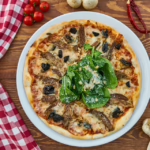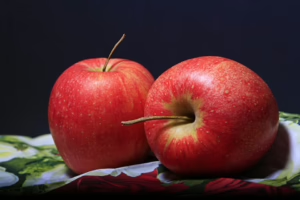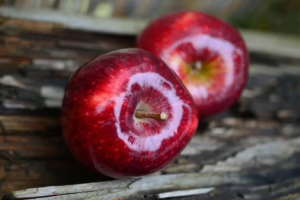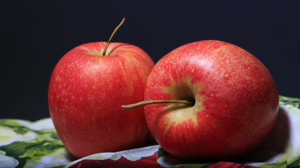Forget Dieting! Eat These 10 Foods for Weight Loss
Dieting. The word itself evokes images of bland, restrictive meals, relentless hunger, and a constant battle against cravings. For many, it’s a cycle of deprivation followed by inevitable relapse, leaving them feeling defeated and further away from their weight loss goals. But what if there was a different approach? What if, instead of focusing on what you can’t eat, you focused on incorporating delicious, nutritious foods that naturally support weight loss and overall health?
Forget the restrictive diets and unsustainable food rules. This article delves into ten powerful foods that, when incorporated into a balanced eating plan, can help you achieve your weight loss goals while nourishing your body and improving your well-being. We’ll explore the science behind these foods, providing evidence-based explanations of how they contribute to satiety, boost metabolism, and promote healthy fat burning.
The Pitfalls of Traditional Dieting:
Before we dive into the list of power foods, it’s important to understand why traditional dieting often fails. Restrictive diets often lead to:
- Metabolic Slowdown: Drastically reducing calorie intake can trigger your body to conserve energy, slowing down your metabolism and making it harder to lose weight in the long run.
- Nutrient Deficiencies: Limiting food choices can deprive your body of essential vitamins, minerals, and other nutrients, leading to fatigue, weakened immunity, and other health problems.
- Muscle Loss: Dieting can lead to the breakdown of muscle tissue, which further slows down metabolism.
- Increased Cravings: Deprivation often leads to intense cravings for forbidden foods, making it difficult to stick to the diet in the long term.
- Psychological Distress: The constant focus on food restriction can lead to feelings of guilt, shame, and anxiety around eating, negatively impacting mental and emotional well-being.
- Yo-Yo Effect: The cycle of weight loss followed by weight regain, known as the yo-yo effect, can be detrimental to long-term health and can make it harder to lose weight in the future.
Instead of focusing on deprivation, a more sustainable and effective approach is to focus on incorporating nutrient-dense foods that naturally promote satiety, support a healthy metabolism, and provide the building blocks for optimal health.
The Power of Food for Weight Loss:
The key to losing weight without restrictive dieting lies in choosing foods that:
- Are High in Fiber: Fiber slows down digestion, promoting satiety and preventing overeating.
- Are High in Protein: Protein is essential for building and maintaining muscle mass, which burns more calories than fat tissue. Protein also promotes satiety and can help regulate blood sugar levels.
- Are Low in Calorie Density: Foods with low calorie density provide a large volume of food for a relatively small number of calories, helping you feel full without overeating.
- Are Rich in Nutrients: Nutrient-dense foods provide essential vitamins, minerals, and antioxidants that support overall health and well-being, which can indirectly contribute to weight loss.
Introducing the Top 10 Foods for Weight Loss:
Here are ten foods that embody these principles and can help you achieve your weight loss goals in a healthy and sustainable way:
1. Avocados: The Healthy Fat Powerhouse
Avocados often get a bad rap because of their high fat content, but the type of fat they contain is incredibly beneficial. Avocados are packed with monounsaturated fats, which have been shown to:
- Promote Satiety: Monounsaturated fats slow down digestion and promote feelings of fullness, helping you eat less throughout the day.[mfn 1]
- Reduce Belly Fat: Some studies suggest that monounsaturated fats may specifically target abdominal fat.
- Improve Insulin Sensitivity: Monounsaturated fats can improve insulin sensitivity, which is crucial for regulating blood sugar levels and preventing weight gain.
- Support Heart Health: Monounsaturated fats can help lower bad cholesterol (LDL) and raise good cholesterol (HDL).
Beyond healthy fats, avocados are also a good source of fiber, potassium, and various vitamins, including vitamin K, vitamin C, and several B vitamins.
How to Incorporate Avocados:
- Add sliced avocado to salads, sandwiches, or toast.
- Make guacamole as a healthy dip for vegetables.
- Blend avocado into smoothies for a creamy texture and added nutrients.
- Use mashed avocado as a healthy substitute for mayonnaise.
2. Eggs: The Protein-Packed Breakfast Champion
Eggs are a nutritional powerhouse, packed with protein, essential vitamins, and minerals. They are also incredibly versatile and can be incorporated into a wide variety of meals.
- High in Protein: One large egg contains about 6 grams of protein, which is essential for building and maintaining muscle mass.
- Promote Satiety: Studies have shown that eating eggs for breakfast can significantly reduce hunger and calorie intake throughout the day.[mfn 2]
- Rich in Choline: Eggs are a good source of choline, an essential nutrient that plays a role in brain health and metabolism.
- Affordable and Accessible: Eggs are a relatively inexpensive and widely available source of protein.
How to Incorporate Eggs:
- Enjoy scrambled, fried, or poached eggs for breakfast.
- Add hard-boiled eggs to salads or snacks.
- Make omelets or frittatas with vegetables and lean protein.
- Use eggs as a binder in meatloaf or other dishes.
3. Berries: The Antioxidant-Rich Sweet Treat
Berries, such as blueberries, strawberries, raspberries, and blackberries, are packed with antioxidants, fiber, and vitamins. They are also naturally sweet, making them a healthy and delicious alternative to processed sweets.
- High in Antioxidants: Berries are rich in antioxidants, which protect your cells from damage caused by free radicals.
- High in Fiber: Berries are a good source of fiber, which promotes satiety and regulates blood sugar levels.
- Low in Calories: Berries are relatively low in calories, making them a great choice for weight loss.
- Improve Insulin Sensitivity: Some studies suggest that berries may improve insulin sensitivity.
How to Incorporate Berries:
- Add berries to smoothies, yogurt, or oatmeal.
- Enjoy berries as a snack on their own.
- Add berries to salads for a touch of sweetness.
- Use berries as a topping for pancakes or waffles.
4. Leafy Greens: The Nutrient-Dense Base for Any Meal
Leafy greens, such as spinach, kale, lettuce, and arugula, are incredibly low in calories and packed with vitamins, minerals, and fiber. They are a versatile ingredient that can be incorporated into a wide variety of dishes.
- Low in Calories: Leafy greens are extremely low in calories, allowing you to eat large portions without consuming a lot of calories.
- High in Fiber: Leafy greens are a good source of fiber, which promotes satiety and regulates blood sugar levels.
- Rich in Vitamins and Minerals: Leafy greens are packed with vitamins and minerals, including vitamin K, vitamin A, vitamin C, and folate.
- Versatile Ingredient: Leafy greens can be used in salads, smoothies, soups, and many other dishes.
How to Incorporate Leafy Greens:
- Make a salad with leafy greens as the base.
- Add leafy greens to smoothies for added nutrients.
- Sauté leafy greens with garlic and olive oil.
- Add leafy greens to soups and stews.
5. Salmon: The Omega-3 Fatty Acid Powerhouse
Salmon is a fatty fish that is rich in omega-3 fatty acids, protein, and other essential nutrients. Omega-3 fatty acids have been shown to have numerous health benefits, including:
- Reduce Inflammation: Omega-3 fatty acids have anti-inflammatory properties that can help reduce the risk of chronic diseases.
- Improve Heart Health: Omega-3 fatty acids can help lower blood pressure and improve cholesterol levels.
- Promote Satiety: Protein and healthy fats promote feelings of fullness, helping you eat less throughout the day.
- Boost Metabolism: Some studies suggest that omega-3 fatty acids may boost metabolism.
How to Incorporate Salmon:
- Bake, grill, or pan-fry salmon.
- Add smoked salmon to bagels or salads.
- Make salmon patties or burgers.
- Enjoy salmon sushi or sashimi.
6. Nuts and Seeds: The Healthy Snack Option
Nuts and seeds, such as almonds, walnuts, chia seeds, and flax seeds, are packed with healthy fats, protein, fiber, and essential nutrients. They are a great snack option that can help you stay full and energized between meals.
- High in Healthy Fats: Nuts and seeds are a good source of healthy fats, which promote satiety and support overall health.
- High in Protein: Nuts and seeds contain protein, which is essential for building and maintaining muscle mass.
- High in Fiber: Nuts and seeds are a good source of fiber, which promotes satiety and regulates blood sugar levels.
- Rich in Vitamins and Minerals: Nuts and seeds are packed with vitamins and minerals, including vitamin E, magnesium, and zinc.
How to Incorporate Nuts and Seeds:
- Enjoy a handful of nuts or seeds as a snack.
- Add nuts and seeds to salads, yogurt, or oatmeal.
- Use nut butter as a spread for toast or apples.
- Add chia seeds or flax seeds to smoothies or baked goods.
7. Greek Yogurt: The Protein-Rich Dairy Choice
Greek yogurt is a protein-packed dairy product that is low in sugar and high in calcium. It is a great option for breakfast, lunch, or a snack.
- High in Protein: Greek yogurt contains significantly more protein than regular yogurt, which promotes satiety and helps build muscle mass.
- Low in Sugar: Greek yogurt is typically lower in sugar than regular yogurt, making it a healthier choice.
- Rich in Calcium: Greek yogurt is a good source of calcium, which is essential for bone health.
- Probiotic Benefits: Many Greek yogurts contain probiotics, which are beneficial bacteria that support gut health.
How to Incorporate Greek Yogurt:
- Enjoy Greek yogurt with berries and granola for breakfast.
- Use Greek yogurt as a healthy substitute for sour cream.
- Make a dip with Greek yogurt, herbs, and spices.
- Add Greek yogurt to smoothies for added protein.
8. Legumes: The Fiber and Protein Powerhouse
Legumes, such as beans, lentils, and peas, are packed with fiber, protein, and essential nutrients. They are a versatile and affordable ingredient that can be incorporated into a wide variety of dishes.
- High in Fiber: Legumes are an excellent source of fiber, which promotes satiety, regulates blood sugar levels, and supports digestive health.
- High in Protein: Legumes are a good source of protein, which is essential for building and maintaining muscle mass.
- Rich in Iron: Legumes are a good source of iron, which is essential for energy production and oxygen transport.
- Versatile Ingredient: Legumes can be used in soups, stews, salads, and many other dishes.
How to Incorporate Legumes:
- Add beans to soups, stews, and chili.
- Make a lentil soup or stew.
- Add chickpeas to salads or hummus.
- Use beans as a filling for burritos or tacos.
9. Cruciferous Vegetables: The Cancer-Fighting Fiber Source
Cruciferous vegetables, such as broccoli, cauliflower, Brussels sprouts, and cabbage, are packed with fiber, vitamins, minerals, and antioxidants. They are also known for their cancer-fighting properties.
- High in Fiber: Cruciferous vegetables are a good source of fiber, which promotes satiety and regulates blood sugar levels.
- Rich in Vitamins and Minerals: Cruciferous vegetables are packed with vitamins and minerals, including vitamin C, vitamin K, and folate.
- Antioxidant Power: Cruciferous vegetables contain antioxidants that protect your cells from damage.
- Cancer-Fighting Properties: Studies have shown that cruciferous vegetables may help protect against certain types of cancer.
How to Incorporate Cruciferous Vegetables:
- Roast, steam, or stir-fry cruciferous vegetables.
- Add cruciferous vegetables to soups and stews.
- Make a salad with shredded cabbage or Brussels sprouts.
- Enjoy cauliflower rice as a healthy alternative to white rice.
10. Whole Grains: The Complex Carbohydrate Champion
Whole grains, such as brown rice, quinoa, and oats, are a good source of fiber, complex carbohydrates, and essential nutrients. They provide sustained energy and help regulate blood sugar levels.
- High in Fiber: Whole grains are a good source of fiber, which promotes satiety, regulates blood sugar levels, and supports digestive health.
- Complex Carbohydrates: Whole grains provide complex carbohydrates, which are digested slowly and provide sustained energy.
- Rich in Nutrients: Whole grains contain essential nutrients, including B vitamins, iron, and magnesium.
- Choose Wisely: Opt for minimally processed whole grains over refined grains, which have been stripped of their nutrients and fiber.
How to Incorporate Whole Grains:
- Enjoy oatmeal or whole-grain cereal for breakfast.
- Use brown rice or quinoa as a side dish.
- Make sandwiches with whole-grain bread.
- Use whole-wheat pasta in your favorite pasta dishes.
Building a Sustainable Weight Loss Plan:
Incorporating these ten foods into your diet is a great starting point for achieving sustainable weight loss. However, it’s important to remember that weight loss is a complex process that involves more than just eating certain foods. To maximize your results, consider the following tips:
- Focus on Portion Control: Even healthy foods can contribute to weight gain if eaten in excess. Pay attention to portion sizes and be mindful of your hunger cues.
- Stay Hydrated: Drinking plenty of water throughout the day can help you feel full and reduce cravings.
- Get Regular Exercise: Exercise burns calories, builds muscle mass, and improves overall health. Aim for at least 30 minutes of moderate-intensity exercise most days of the week.
- Manage Stress: Stress can lead to overeating and weight gain. Find healthy ways to manage stress, such as yoga, meditation, or spending time in nature.
- Get Enough Sleep: Lack of sleep can disrupt hormones that regulate appetite and metabolism. Aim for 7-8 hours of sleep per night.
- Track Your Progress: Keep a food journal or use a tracking app to monitor your calorie intake and track your weight loss progress.
- Be Patient and Persistent: Weight loss is a journey, not a destination. Don’t get discouraged if you don’t see results immediately. Stay consistent with your healthy habits and you will eventually reach your goals.
- Consult a Professional: If you have any underlying health conditions or are struggling to lose weight on your own, consider consulting a registered dietitian or other healthcare professional.
The Bottom Line:
Forget restrictive dieting! By focusing on incorporating these ten nutrient-dense foods into your diet, you can create a sustainable and enjoyable weight loss plan that nourishes your body and supports your overall health. Remember to focus on portion control, stay hydrated, get regular exercise, manage stress, and prioritize sleep. With patience and persistence, you can achieve your weight loss goals and enjoy a healthier, happier life. Embrace the power of food to fuel your body and transform your well-being. Say goodbye to deprivation and hello to a more balanced and fulfilling approach to weight loss.
References:
[mfn 1] Wien, M. A., et al. “Effects of avocado as replacement for dietary saturated fat on plasma lipids, lipoproteins, and apolipoproteins.” American Journal of Clinical Nutrition 101.4 (2015): 714-724. [mfn 2] Vander Wal, J. S., et al. “Egg breakfast enhances weight loss.” International Journal of Obesity 32.11 (2008): 1545-1551.
























Add Comment